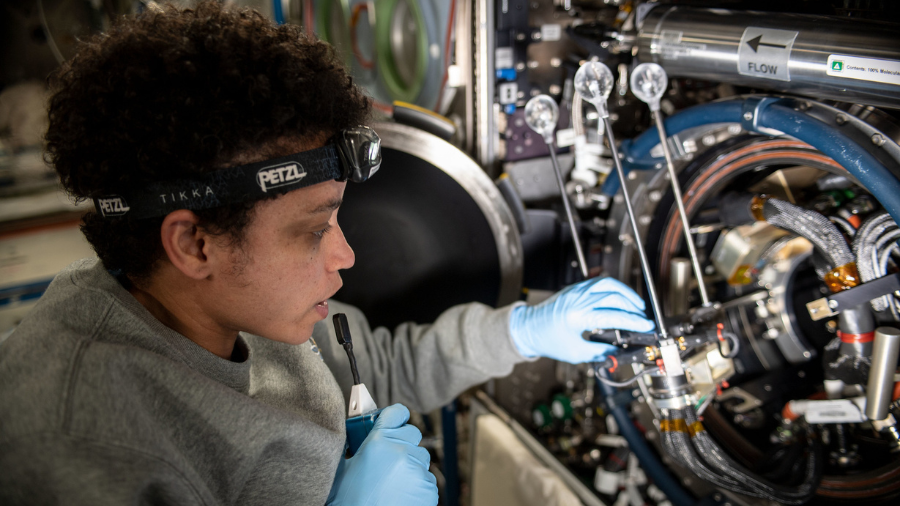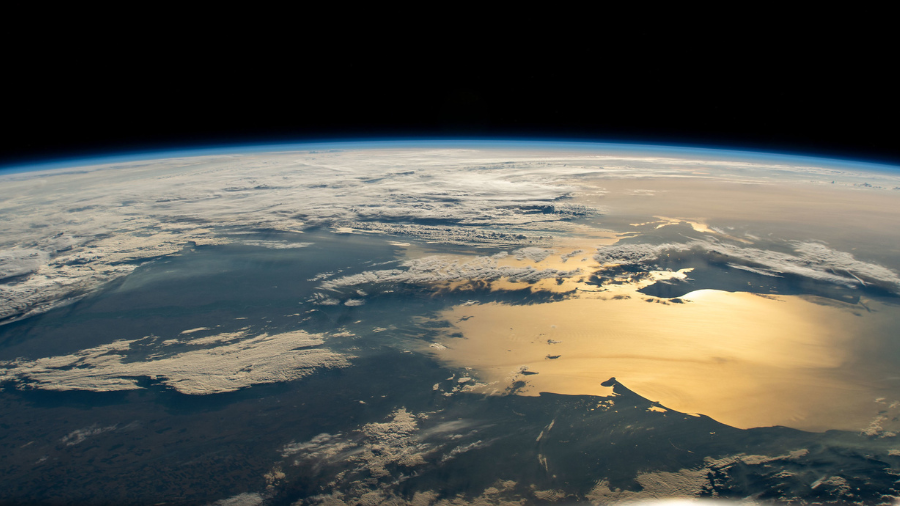
The seven-member Expedition-67 crew split their time studying burning in microgravity, space manufacturing, testing an ultrasound device, and more, in addition to conducting some maintenance work aboard the International Space Station.
NASA Flight Engineer Jessica Watkins focused on setting up the Combustion Integrated Rack inside the U.S. Destiny laboratory module to support the operations for the SoFIE-GEL, or Solid Fuel Ignition and Extinction – Growth and Extinction Limit, study. The investigation measures the amount of heating in a fuel sample to determine how fuel temperature affects material flammability. Results could improve understanding of early fire growth behavior and help determine optimal fire suppression techniques, improving crew safety in future space facilities.
NASA Flight Engineer Kjell Lindgren opened the Cell Biology Experiment Facility to set up the Rodent Research-22 experiment. He also completed a Robotic On-Board Trainer for Research (ROBoT-r) session as part of the Behavioral Core Measures experiment. Later in the day, Lindgren performed the fourth medical technology demonstration of the Butterfly IQ Ultrasound device, focused on testing the effectiveness of a portable ultrasound device used in conjunction with a mobile device in the space environment. Such commercial off-the-shelf technology could provide essential medical capabilities for future deep space exploration missions.
ESA (European Space Agency) Flight Engineer Samantha Cristoforetti conducted public affairs activities for ESA and moved cargo from the SpaceX CRS-25 Dragon spacecraft. NASA Flight Engineer Bob Hines worked on the Genes in Space-9 investigation, Space Fibers-3 space manufacturing study, and transferred supplies from the Dragon spacecraft.
The station’s three cosmonauts focused mainly on maintenance and exercise. Commander Oleg Artemyev spent his morning searching for leaks in the Zvezda service module while cosmonaut Sergey Korsakov checked the brakes on the European Robotic Arm. Cosmonaut Denis Matveev set up an electrocardiogram for a 24-hour survey of his heart health. He rested for 20 minutes before using the Tranquility module’s advanced resistive exercise device (ARED) to perform exercises such as bench presses, squats, and deadlifts.
Learn more about station activities by following the space station blog, @space_station and @ISS_Research on Twitter, as well as the ISS Facebook and ISS Instagram accounts.
Get weekly video highlights at: http://jscfeatures.jsc.nasa.gov/videoupdate/
Get the latest from NASA delivered every week. Subscribe here: www.nasa.gov/subscribe




